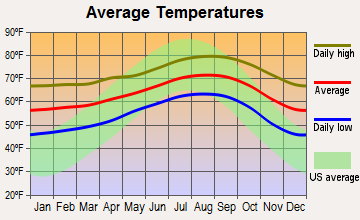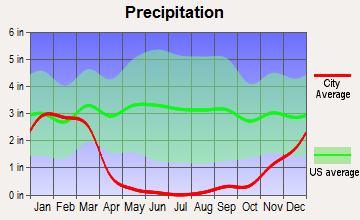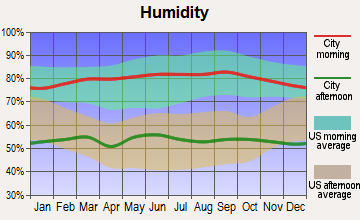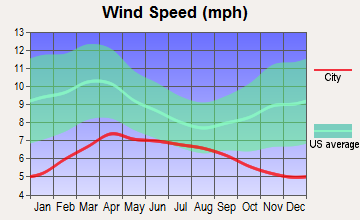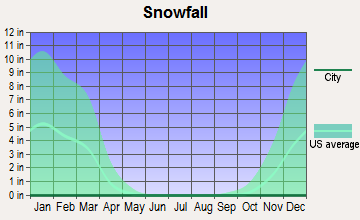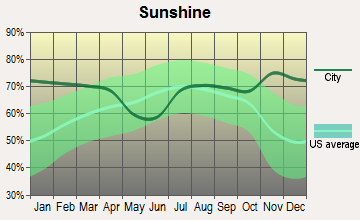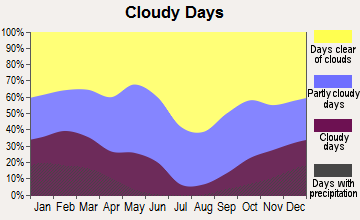 Central Coast, CA
Central Coast, CA
 Irvine, CA
Irvine, CA
The Central Coast of California and Irvine, California each have unique attributes that draw residents and tourists alike. From the tranquility of the seaside to the bustling streets of a master-planned city, they both offer a distinct Californian experience. This comparison aims to give you a rounded perspective on living in these two locations based on multiple aspects, including crime and safety, weather, cost of living, and more.

 Central Coast, CA and
Central Coast, CA and  Irvine, CA : 6.4 miles
Irvine, CA : 6.4 miles
Irvine's population is larger by 30%. Its population has grown by 165,959 people (116.0%) since 2000.
| Population | ||
| Type | Central Coast | Irvine |
|---|---|---|
| Population | 238,434 | 309,031 |
| Female / male percentage | 50% / 50%
|
50.6% / 49.4%
|
Irvine, California has consistently been known as one of the safest cities in the United States. This is due to its low crime rates, especially when it comes to violent crimes. Central Coast, on the other hand, has a slightly higher crime rate compared to the national average, but it still tends to be safe overall, especially in smaller, tightly-knit communities. However, as with any location, it's important to be aware of your surroundings.
While both areas are generally more expensive than other parts of the country, Irvine has a significantly higher cost of living compared to the U.S average primarily because of housing prices. The Central Coast, while also expensive, tends to be a bit more affordable by comparison. Of course, specific costs vary within each region, with upscale areas being more expensive.
Similarly, both regions are subject to California's progressive state income tax, which ranges from 1% to 13.3% depending on income levels. Neither Irvine nor Central Coast cities impose additional local income tax.
California has a baseline property tax rate of 1% based on the assessed value of the property. However, added local levies and taxes make the rates slightly different in all counties. On average, rates can be slightly higher in Irvine compared to counties on the Central Coast.
Both Irvine and the Central Coast fall under California state jurisdiction, so they have the same state sales tax rate of currently 7.25%. Local city taxes may add to this and vary in each city. It’s best to check the specific rates for the city you are interested in.
| Income | ||
| Type | Central Coast | Irvine |
|---|---|---|
| Estimated median household income | $106,582 | $105,774 |
| Estimated per capita income | $70,103 | $54,053 |
| Cost of living index (U.S. average is 100) | 101.8 | 89.8 |
If you make $50,000 in Irvine, you will have to make $56,682 in Central Coast to maintain the same standard of living.
Irvine is inland and features a master-planned suburban landscape. The Central Coast, stretching between San Francisco and Los Angeles, encompasses rugged coastline, beautiful beaches, farmland, vineyards, and scenic rolling hills making for a varied and attractive landscape.
| Geographical information | ||
| Type | Central Coast | Irvine |
|---|---|---|
| Land area | 50.4 sq. miles | 46.2 sq. miles |
| Population density | 4,732.1 people per sq. mile | 6,691.5 people per sq. mile |
 Central Coast, CA
Central Coast, CA
 Irvine, CA
Irvine, CA
Irvine is known for its excellent public schools, many of which consistently rank highly in the state and the nation. The University of California, Irvine, is also located here, offering quality higher education. The Central Coast, while it doesn't have as many higher education institutions as Irvine, boasts several good-quality public and private schools, colleges and the California Polytechnic State University in San Luis Obispo.
| Education level (25-year-olds and older) | ||
| Type | Central Coast | Irvine |
|---|---|---|
| Bachelor's degree or higher | 46.3% | 68.3% |
| Graduate or professional degree | 17.3% | 30.9% |
| High school or higher | 88.6% | 95.8% |
Irvine has a strong economy, with a low unemployment rate and a diverse range of industries, including technology, healthcare, and finance. The Central Coast's economy is more dependent on agriculture and tourism, with viticulture and winemaking being important sectors. However, both regions offer good employment opportunities for both residents and commuters.
In Irvine, some of the biggest employers include Blizzard Entertainment, Broadcom Corporation, and the University of California, Irvine. On the Central Coast, the biggest employers often include local municipalities, hospitals, school districts, and agriculture-based businesses like wineries.
Both regions enjoy a typical Southern California climate, characterized by warm, mild winters and hot summers. However, being closer to the coast, Central Coast tends to be more temperate and experiences less drastic temperature swings than Irvine. Sea breezes keep the heat in check, making for a cooler and milder summer than inland areas. Irvine can get particularly hot during the peak of summer but is overall pleasant and warm.
| Weather and climate | ||
| Type | Central Coast | Irvine |
|---|---|---|
| Temperature - Average | 62.4°F | 63.6°F |
| Humidity - Average morning or afternoon humidity | 69.7% | 69.5% |
| Humidity - Differences between morning and afternoon humidity | 26% | 25.7% |
| Humidity - Maximum monthly morning or afternoon humidity | 78.1% | 77.7% |
| Humidity - Minimum monthly morning or afternoon humidity | 52% | 52% |
| Precipitation - Yearly average | 12.1 in | 13.1 in |
| Snowfall - Yearly average | 0 in | 0 in |
| Clouds - Number of days clear of clouds | 26.6% | 26.6% |
| Sunshine amount - Average | 78.3% | 78.3% |
| Sunshine amount - Differences during a year | 21.7% | 21.7% |
| Sunshine amount - Maximum monthly | 84.4% | 84.4% |
| Sunshine amount - Minimum monthly | 62.7% | 62.7% |
| Wind speed - Average | 5.8 mph | 5.7 mph |
| Natural disasters | ||
| Type | Central Coast | Irvine |
|---|---|---|
| Tornado activity compared to U.S. average | 18.4% | 18.7% |
| Earthquake activity compared to U.S. average | 6,801.5% | 6,900.9% |
| Natural disasters compared to U.S. average | 32% | 32% |
Irvine has a comprehensive network of public transit options, including buses, shuttles, and biking lanes and is in close proximity to major freeways and the John Wayne Airport. Central Coast, while providing local bus services and Highway 101 access, relies more heavily on private transportation. The drive between cities can be scenic on the Central Coast, especially on the famous Pacific Coast Highway.
| Transport | ||
| Type | Central Coast | Irvine |
|---|---|---|
| Amtrak stations | 0 | 1 |
| Amtrak stations nearby | 3 | 3 |
| FAA registered aircraft | 0 | 173 |
| FAA registered aircraft manufacturers and dealers | 0 | 2 |
Real estate in Irvine tends to be significantly pricier, given the city's high demand, quality schools, and amenities. The Central Coast offers a mix of real estate options, from beachfront homes to vineyard properties, usually at more affordable prices compared to Irvine.
Irvine is recognized for its master-planned communities and well-designed subdivisions, each endowed with amenities like parks, biking trails, and shopping areas. The Central Coast offers an eclectic mix of neighborhoods, from quaint seaside towns to charming wine country villages, all offering a slower pace of life than the big cities.
| Houses and residents | ||
| Type | Central Coast | Irvine |
|---|---|---|
| Houses | 96,674 | 122,260 |
| Average household size (people) | 2.4 | 2.6 |
| Houses occupied | 90,435 (93.5%) | 111,648 (91.3%) |
| Houses occupied by owners | 43,559 (48.2%) | 49,861 (44.7%) |
| Houses occupied by renters | 46,876 (51.8%) | 61,787 (55.3%) |
| Median rent asked for vacant for-rent units | $2,849 | $3,151 |
| Median price asked for vacant for-sale houses and condos | $1,099,558 | $948,000 |
| Estimated median house or condo value | Over $1,000,000 | $970,500 |
| Median number of rooms in apartments | 3.9 | 3.8 |
| Median number of rooms in houses and condos | 6.1 | 5.9 |
| Renting percentage | 53.9% | 49.8% |
| Housing density (houses/condos per square mile) | 1,918.7 | 2,647.3 |
| Household income disparities | 38.4% | 41.8% |
| Housing units without a mortgage | 8,041 (21.3%) | 316 (1%) |
| Housing units with both a second mortgage and home equity loan | 100 (0.3%) | 2,738 (8.4%) |
| Housing units with a mortgage | 29,764 (78.7%) | 32,261 (99%) |
| Housing units with a home equity loan | 3,303 (8.7%) | 0 (0%) |
| Housing units with a second mortgage | 3,451 (9.1%) | 3,066 (9.4%) |
| Housing units lacking complete kitchen facilities | 0.7% | 2.2% |
| Housing units lacking complete plumbing facilities | 0.4% | 0.1% |
Irvine hosts numerous international corporations, with a particularly strong technology sector. The Central Coast is largely agricultural, particularly famous for its wine production. Both areas also have burgeoning healthcare sectors and significant tourism and hospitality industries due to their pleasant climates and natural beauty.
Both regions provide access to high-quality healthcare facilities. Irvine boasts state-of-the-art healthcare facilities with a focus on research, thanks to the influence of UCI. The Central Coast also has good quality healthcare, with several hospitals and clinics spread across the region.
Being a master-planned city, Irvine has a well-developed infrastructure with orderly, grid-like streets and well-maintained public facilities. The Central Coast, with a mix of urban and rural areas, has a more varied infrastructure, but generally good. Transportation connections like highways and airports are also in place in both locations.
| Infrastructure | ||
| Type | Central Coast | Irvine |
|---|---|---|
| TV stations | 2 | 2 |
| Nuclear power plants nearby | 0 | 2 |
Irvine boasts a diverse range of cultural experiences and dining options, influenced by its mix of multi-cultural residents. The Central Coast offers a rich cultural scene as well, with its laid-back coastal vibe, western history, and the farm-to-table lifestyle reflected in the local dining scene. Wine-tasting tours are also hugely popular in the region.
Irvine doesn't have its own major league sports teams but it's close to Anaheim, which is home to the Angels (MLB) and Ducks (NHL). On the Central Coast, you won't find major league teams, but there is a fervent following for local college and high school sports, especially football and basketball.







